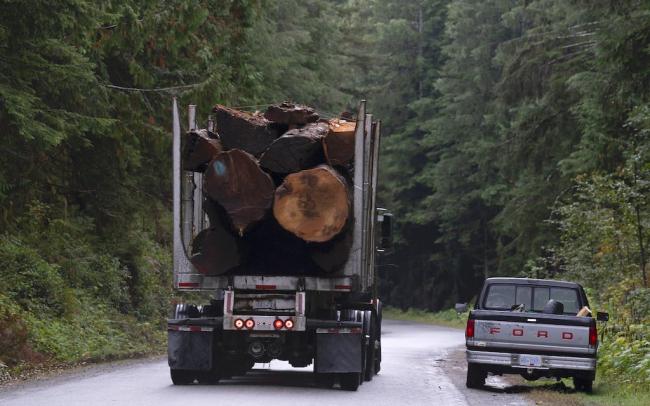Articles Menu

June 28th 2023
The B.C. government has announced changes to improve transparency around logging operations, but critics have more questions than answers.
Due to recent changes to the Forest and Range Practices Act, forestry companies will be required to create a map of proposed logging operations available for public review as of April 1, 2024, according to B.C.’s Ministry of Forests. And the public will be able to offer input on what environmental values should be considered for future logging plans.
In addition, the province is developing an online mapping system that companies can choose to use to display their map and get public feedback. The system will be fully launched sometime in 2024.
“Opening the planning process to the public through the use of new digital tools will engender greater public trust and ensure forest resiliency,” said Minister of Forests Bruce Ralston in a press release.
But it’s not clear whether logging companies are required to put their operation maps online if they don’t opt to use the government site, environmental groups said. How or if public environmental concerns will shape logging plans is also unclear, as is the question of whether the new mapping rules apply to logging plans that have already been recently developed.
“Since use of the [B.C.] online mapping tool is voluntary, some [licence] holders might choose to only make their forestry operations maps available for viewing and comment at their place of business,” a detailed reading of a document on the ministry website revealed.
The only publishing requirement is that forestry companies must announce the map is available for public view and input once in a newspaper and on a public website. They must outline the hours people can view the document and the address of the location where it is kept.
It’s pretty bold of the province to laud increasing public engagement in forestry but not require logging companies to post the maps online in this day and age so people can access them easily, said Jens Wieting, senior forest and climate campaigner with Sierra Club BC.
“The title of the press release talks about transparency, but the more time you spend reading and researching, the more disappointing [the announcement] becomes,” Wieting said.
The B.C. government has announced changes to improve transparency around logging operations, but critics have more questions than answers. #OldGrowthForests - Twitter
The step is incremental, doing little to meet the government’s commitment to transform its approach to old-growth logging and meet much greater public transparency concerns or the recommendations of the 2020 independent old-growth strategic review.
Recommendations focused on involving First Nations and communities in forestry decisions, temporarily deferring logging in at-risk areas, protecting more massive trees, and improving public information and reporting in the sector.
“We’re already three years out from the promised paradigm shift,” Wieting said, adding the province promised to meet all the strategic review’s recommendations.
“We are still in the dark about which of the most at-risk old-growth forests have logging deferrals in place, and there's still no conservation financing to make it easier for First Nations to implement conservation solutions.”
Torrance Coste, national campaign director for the Wilderness Committee, agreed.
Little progress has been made on forestry’s public transparency, a core tenet of many of the recommendations from the strategic review.
The new map requirements put the onus on individuals and communities to wrestle with logging companies to protect patches of the forest rather than the government creating an overarching, cohesive policy that safeguards at-risk ecosystems, he said.
“This isn’t a paradigm shift, it's a public relations strategy,” Coste said.
“Saying that you're making moves to improve transparency and public information is different than actually doing it.”
As part of the modernization of the forestry sector, the province promised to provide updates on its process, create forest reports and establish a “one-stop” shop on the government’s website for meaningful old-growth information for public consumption and debate.
Yet, a full picture about how much at-risk old-growth is left and where and how much has been logged since the B.C. government promised change almost three years ago still doesn’t exist, Coste stressed.
This creates confusion and polarized narratives from the viewpoints of the logging industry and conservationists, which doesn’t make for informed and insightful public conversations about forestry policy, he said.
“Public accountability is not possible without all that information,” he said.
“We need a real understanding of what's happening on the land right now, in the woods.”
The Ministry of Forests did not reply to Canada’s National Observer’s questions regarding the new mapping regulations before publication deadline.
[Top photo: A logging truck driving past the Fairy Creek logging area near Port Renfrew, B.C. Photo Jonathan Hayward / Canadian Press]